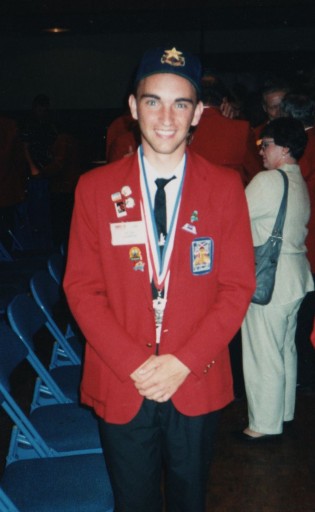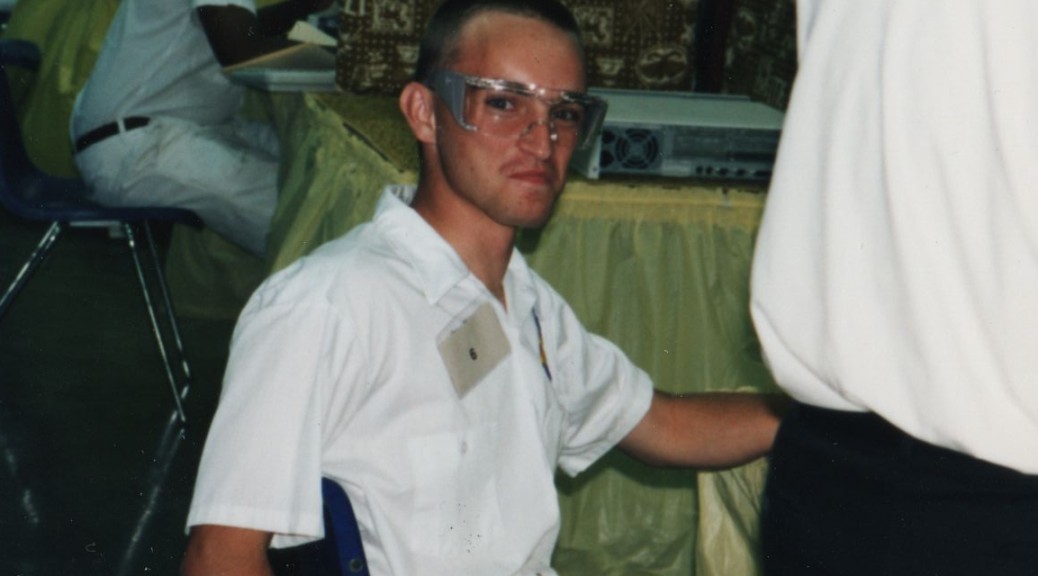As with any of my stories based in reality, it is true and accurate only to the extent that my memory is correct. This is an account of things as I remember them.
Vica Nationals
When I was in High School, I had a rather patient, kind, and understanding electronics teacher named Ralph Dammann who went out of his way to give me opportunities to explore that subject and “color outside the lines” that conventional educational programs draw. He allowed me to skip other classes to work on projects, supported me as I cooked up various new things, and was generally an excellent mentor and facilitator. Under his watchful eye, I worked on a wide variety of projects that ranged from assembling kits that made lights sequence or goofy buzzing noises to designing and building custom circuit boards and electronic “toys” that did fun things like jam television signals, shock unsuspecting victims, trigger an alarm if a sink flooded, and other things like that.
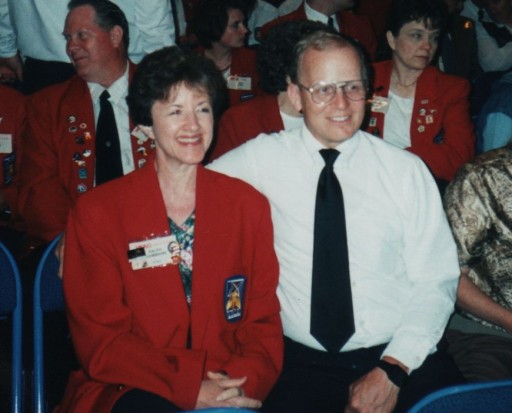
As an example of the kind of things I ended up dong, my school had an annual Christmas tree decorating contest. The wood-shop and electronics teachers decided they were tired of letting the home-economics classes have all the glory and recruited a few of us to “decorate” a tree that would stand out in a crowd. We decided to build a “tree” out of a helical spiraling tower of lights and set them up on a sequencer to run in various patterns. The wood-shop built the frame, a bunch of us built the light balls (Christmas lights stuck through the back of small plastic cups, and the cups glued together to form balls), and I designed and built the sequencer.

We won the voting hands-down. In fact, after two years of wiping out the competition, the rules were changed to require a real tree. As a result, my brother and his cohorts were forced to integrate a small Charley Brown style tree into the display they built. In the end, modified rules only made people more creative and the shop classes still won…
As a result of Mr Dammann’s efforts, I became rather adept at working with electronics and was invited to participate in an annual state-wide electronics competition sponsored by the Vocational Industrial Clubs of America (VICA) my Junior year in High School. With no idea what I was doing, I entered the competition and won the state championship. I was off to the national competition in Kansas City. I was pretty sure I wouldn’t win, but the prospect of flying on a plane for the first time and having the opportunity to experience a bunch of other new things made the trip quite a pleasure.
While I didn’t place the first year, I won State the next and returned to Kansas City the summer after I graduated. Our class also decided to enter a display competition with something as unconventional as our flashing Christmas tree, so a team of us got together to see what we could do. We decided to put a custom-built clock up on a pedestal over a table that would act as the display surface. We hung a pendulum with a magnet in the base of it under the clock, embedded magnets in the display surface to make the pendulum swing in a rather random motion, and I built a custom “exciter” that would put out a strong magnetic pulse when the pendulum swung over the center of the display to keep it going.
The graphics shop printed the logos and other display materials, we recruited someone to sew the skirts together, the wood-shop built the clock cabinet and the display structure, and I took the lead developing the electronics to make it all work. For the clock, Mr Dammann and I decided to build something unconventional by essentially integrating three light sequencers with a disciplined clock… one for the seconds, one for minutes, and one for hours. The graphics shop printed a pattern on the surface of a sheet of plastic and I drilled out the holes, inserted the LEDs, and wired it all together with the custom circuit board that ran the thing. Just for effect, we put a red light bulb in the clock cabinet just to add that special touch.
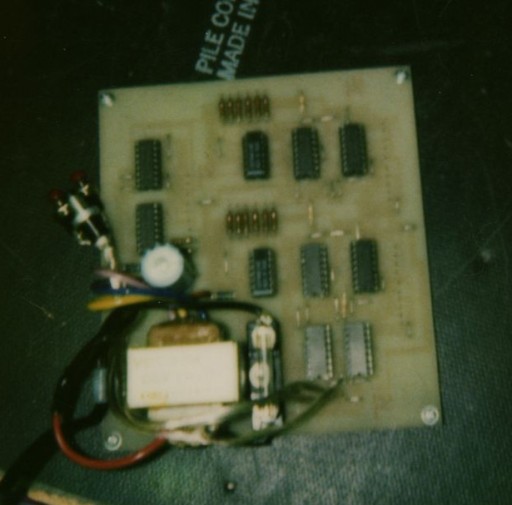
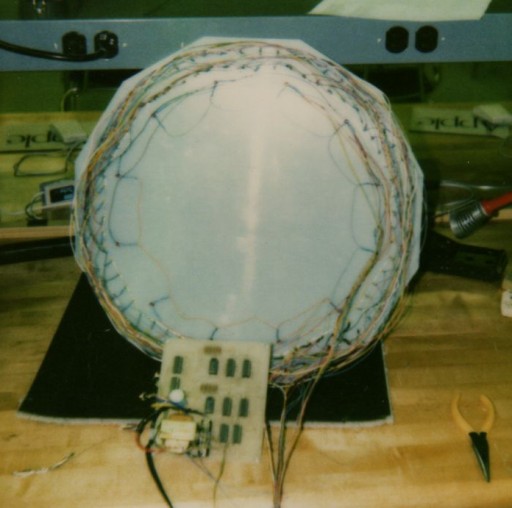
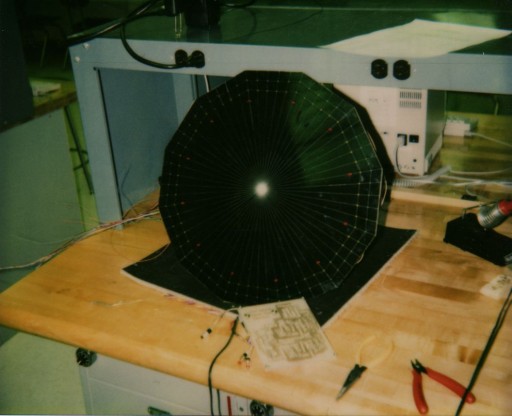
One of the funnier aspects of the clock was the reaction I got when we tried to pack it up and take it on the plane with us. We were concerned it might get broken if we checked it in baggage or shipped it with the rest of the display, so we opted to bring it as a piece of carry-on luggage. You should have seen the face of the security screener when he saw a box full of wires and circuit boards go through the x-ray machine. They made me take the back off of it and show them there were no explosives inside it and show them how it worked before they would let me through. That was before 9/11 when you could still bring pocket knives on a plane. I doubt they’d let me take that thing on a plane today.
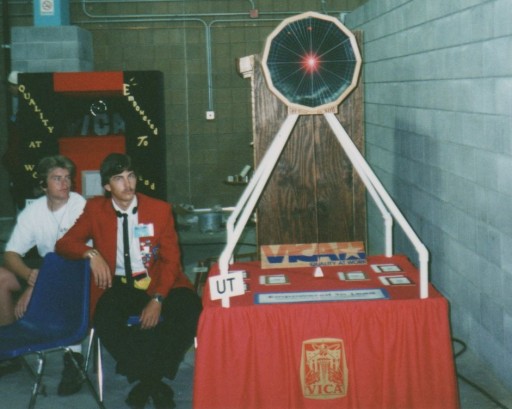
While we didn’t win anything for the display, the clock design was the coolest and most complex thing I’d done in the shop. Years later, I reached out to Mr Dammann to see how he was doing and let him know how much I appreciated what he had done for me, only to find out that several years after he retired he had hunted down that clock and acquired it from the school. He has it hanging in his house to this day.
In addition to the display team and me, we had another team from our school that had won the state competition. This team happened to include a bunch of girls, most of which I had dated at one point or another. Being stupid teenage boys, a few of us thought it would be fun to harass them in an unconventional way. One of the more popular projects to build in the electronics shop was what we call the “annoyatron” – a little box that was easily hidden and would emit a high-pitched scream periodically. We decided it would be fun to modify one with a light-sensor so that it would only turn on when the lights went out and hide it in the girl’s hotel room. I honestly don’t remember how we managed, but we were successful at placing it. About two thirty the next morning, Mr Dammann knocked on our door to tell us he didn’t care who did it (I’m sure he knew) but that we needed to go get it and turn it off so the girls could get some sleep. The girls got even the next day by filling our room with silly string and stuff like that. They took our prank in the right spirit, and everyone had a good time in the end.
I had more luck with my competition. I felt I had done pretty well, but didn’t expect to place in the top three. However, when they announced the winners, I came out second place. I was ecstatic. Aside from the accolades, I was awarded with a range of stuff donated by various companies that included a Snap-On tool kit, Kenwood oscilloscope, and a digital multimeter that would ultimately pay my way through college while I used them to fix televisions, radios, computers, monitors, and anything else that would pay. I still have and regularly use those three items over 20 years after the fact.
